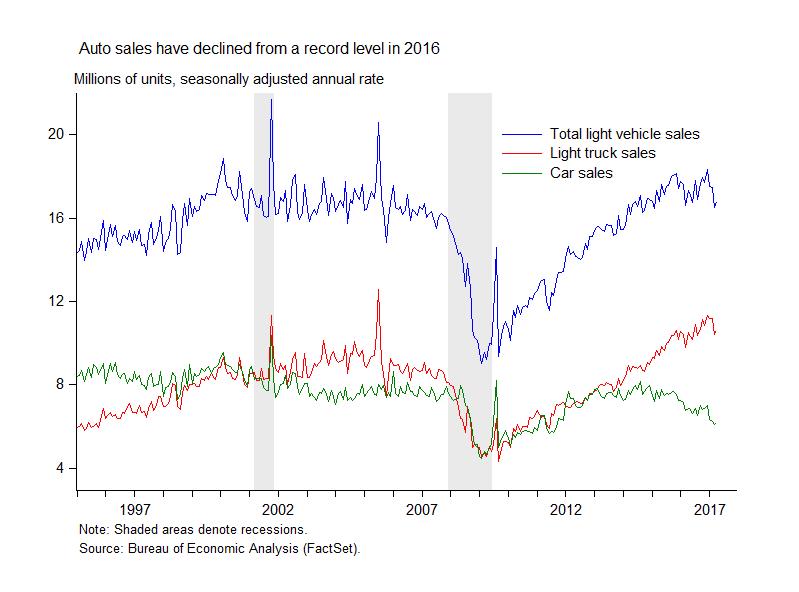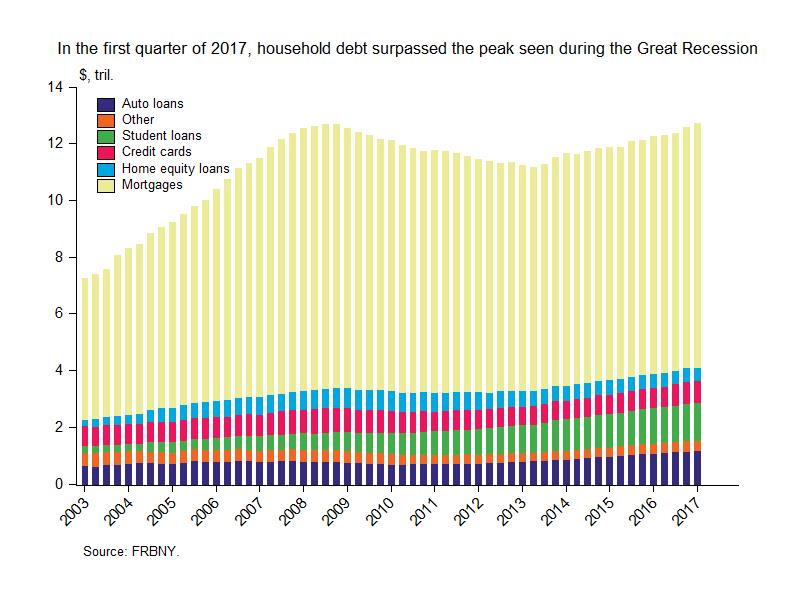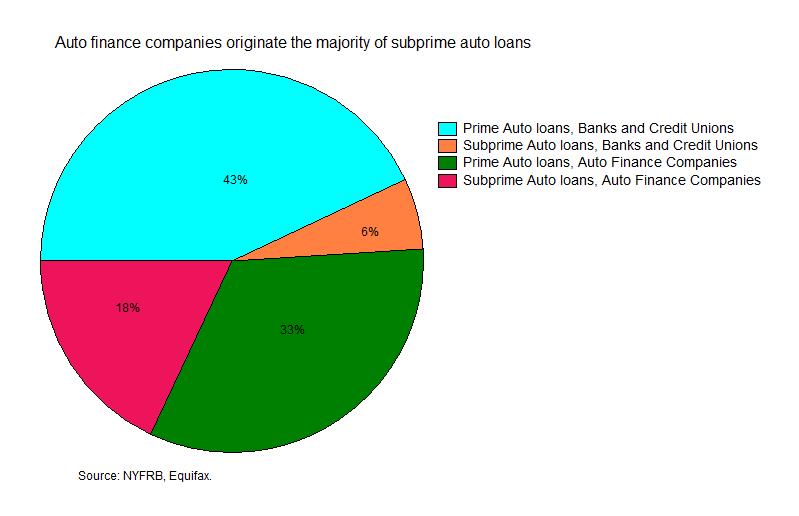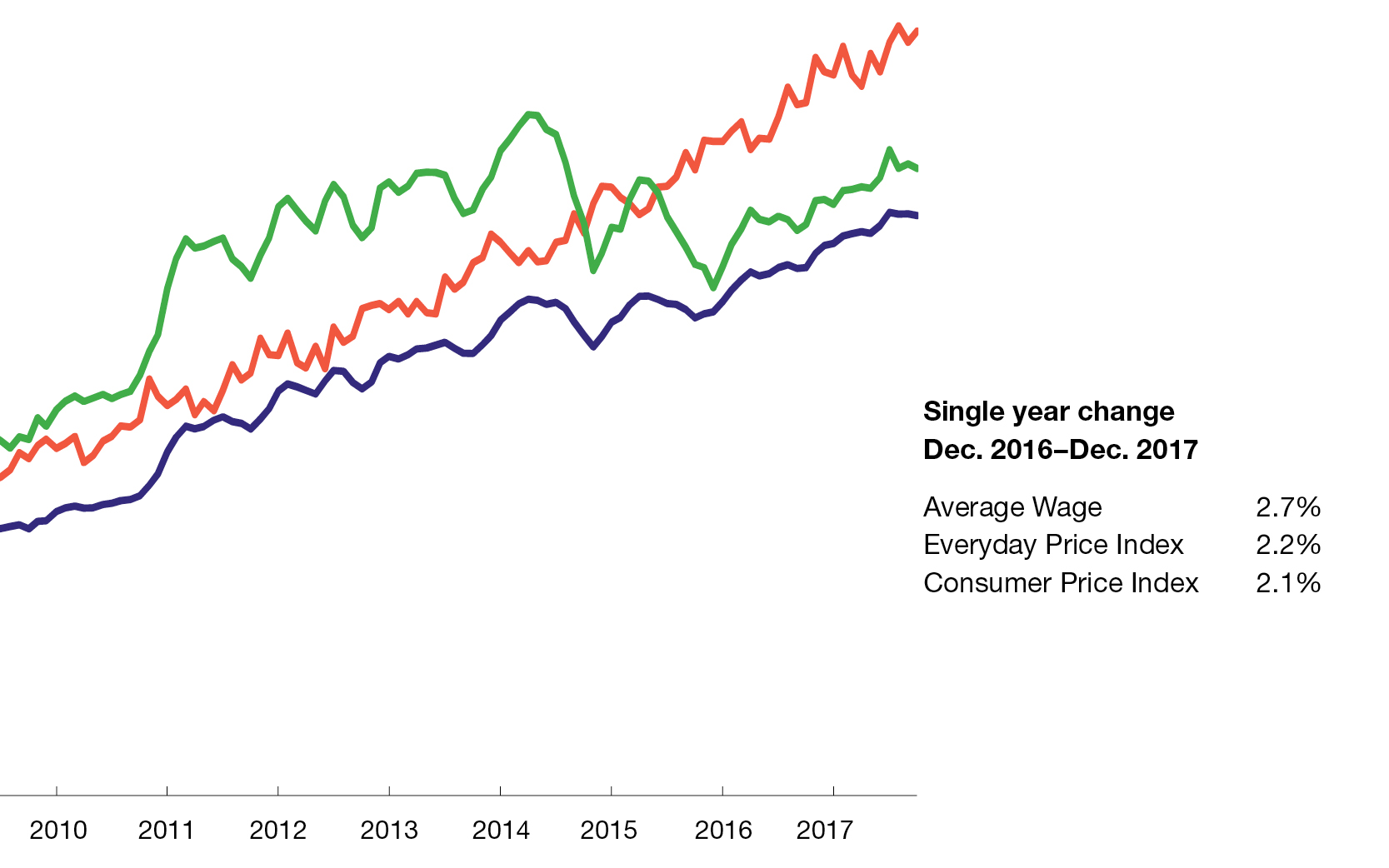The Subprime Auto Bubble Is Losing Air
The economy has added over 15 million jobs since the recession. When Americans get jobs, they tend to need cars. Finance companies and banks have been more than willing to provide auto loans. But auto-lending standards have not been as strict as in other areas. Easy lending standards have led to more borrowers with poor credit scores receiving auto loans. This has contributed to a bubble in subprime auto loans. There is evidence that the bubble is losing air.
Rising delinquency rates on auto loans suggest some consumers have taken on unsustainable auto debt. The result could be tarnished credit scores and repossessions. Consumers who got in over their head will have to rebuild their credit and curb consumption elsewhere. Will bad subprime auto loans hurt creditors and investors? Possibly. Creditors are aware they are extending loans to consumers with poor credit scores. If you listen closely to auto advertisements, you will hear that creditors adjust loan terms based on risk. The advertisements usually say, “Low financing rates for well-qualified buyers.”
According to Bank Rate, in the first quarter of 2017 the average interest rate for a new car loan to a well-qualified buyer was 4.7 percent. In comparison, the interest rate on subprime loans was more than 10 percent. Lenders are aware they are making loans to consumers with poor credit scores. Interest rates on subprime auto loans are much higher than prime auto loans for a reason. The higher interest rate compensates the lenders for the risk of losses in a default.
If the default risk is correctly priced into the loan, it will not matter that the loan is subprime. However, no one can know the future — not even banks and finance companies with quantitative models. Could some of these default risks be mispriced? If so, being subprime will have a bigger effect. Let’s follow the road that led us to subprime worries.
In the latest Business Cycle Monthly report, AIER examined the slower pace of real GDP growth in the first quarter. Consumer spending was sluggish, in part because of a sharp decline in auto sales. Auto sales reached a record level in 2016, at 17.5 million units. But auto sales have slowed into 2017. Despite the slowdown, auto sales remain in line with averages seen during the previous two economic expansions.
A solid labor market has supported the run-up in auto sales. Over the past 12 months, job creation has averaged a brisk 182,000 a month. The number of layoffs each month has been at historical lows. In April, initial claims for unemployment insurance relative to total employment were at an all-time low of 1.7 percent.
Strong hiring and few layoffs have helped push the unemployment rate to a post-recession low in April of 4.4 percent. The April unemployment rate is tied for the second lowest in an economic expansion since the late 1960s. The U-6 unemployment rate, which includes discouraged workers and part-time workers who would prefer full-time work, has also declined: from over 17 percent following the Great Recession to 8.6 percent in April.
Job openings are near an all-time high. The percentage of people who say jobs are plentiful minus the percentage who say jobs are hard to get is above its peak seen in the last economic expansion. People are acting on their perceptions by quitting their jobs, presumably for better jobs elsewhere.
Broad improvement in the labor market has supported growth in consumer debt. Between the first quarter of 2009 and the second quarter of 2013, consumers paid down debt. But from the middle of 2013 onward, consumer have been taking on more debt. At the beginning of 2017, total household debt outstanding was $12.7 trillion, just exceeding the peak seen during the Great Recession. Auto debt has far surpassed its pre-recession peak of $800 billion, reaching a record $1.2 trillion in the first quarter of 2017. Today, auto loans make up a larger share of household debt compared with previous years. From the early 2000s through the Great Recession, auto debt averaged 7.4 percent of total household debt. As of the first quarter of 2017, auto debt was 9.2 percent of total household debt.
As discussed above, favorable financing conditions have also driven auto sales higher. The interest rate on a new car loan fell from 7.9 percent in 2007 to a record low of 4 percent in 2015. Interest rates on new car loans have risen slightly since 2015 but remain low by historical standards. In the first quarter of 2017, auto loan rates were 4.7 percent. To put this in context, since 1975, the interest rate on a new car loan has averaged 9.4 percent.
Lending standards have been easier compared with other sectors. The Survey of Senior Loan Officers from the Federal Reserve Board shows that banks were easing auto loan standards between 2011 to 2016. The net percentage of lenders tightening standards for auto loans averaged −11.4 percent from 2011 to mid-2016. From the middle of 2016 to today, however, lenders have become increasingly wary of making auto loans. The net percentage of domestic banks tightening auto loan standards has averaged 8.7 percent since the second half of 2016, reducing some subprime originations.
Low lending standards during recent years led to more auto loans going to subprime borrowers. A larger share of auto loan origination has shifted to consumers with low credit scores. Following the recession, subprime borrowers, or consumers with credit scores below 620, accounted for 17 percent of auto loan origination. In 2015, the share of auto loans going to the riskiest borrowers reached over 25 percent. What’s more, in 2009, 10.8 percent of auto loans went to consumers with credit scores between 620 and 660. Today, that share is 12.5 percent. A prime credit score is above 660. The share of auto loans going to subprime borrowers has declined slightly since lenders have tightened standards.
Consumers are taking on auto loans with longer terms. In recent decades, the longest auto loan was 60 months (five years). The length of auto loans has been rising. In the fourth quarter of 2015, 29 percent of new auto loans had a term longer than five years. By the end of 2016, the share had increased to 32.1 percent. Loans for used cars have seen a similar extension in terms. Over the past year, the share of used car loans with terms longer than five years increased from 16.4 percent to 18.2 percent.
Easy lending standards and a run-up in auto debt have contributed to rising delinquencies. Some consumers are struggling to stay current on their auto loan balances. Delinquency rates have been rising since 2012. By the first quarter of 2017, 2.5 percent of auto loans were 90 days or more delinquent. At the end of 2012, 1.5 percent of auto loans were delinquent. Delinquent subprime auto loans are leading the overall delinquency rate higher while prime loans have performed better.
If the default risk on subprime auto loans is mispriced, who will take losses? According to the New York Federal Reserve, of the total auto debt outstanding, 76 percent is prime and 24 percent is considered subprime. Banks and credit unions originated the largest share of prime auto loans. In the third quarter of 2016, banks and credit unions originated 43 percent of prime auto loans outstanding while auto finance companies originated 33 percent. Most auto finance companies are the financing arms of car manufacturers or dealerships.
Turning to subprime, auto finance companies originated most of the subprime auto loans. The latest data show that auto finance companies issued 18 percent of subprime auto
loans. Banks and credit unions issued just 6 percent of subprime loans. As the loan shares would lead us to expect, subprime delinquencies are concentrated in auto finance companies. The delinquency rate on auto loans held by auto finance companies is over 5 percent. The delinquency rate on auto loans held by banks and credit unions is around 1 percent.
Shaky auto loans might risk the financial stability of auto finance companies. Some of this risk is mitigated by securitization. Many auto finance companies have been securitizing subprime auto loans in a bond. Finance companies then sell the bond to investors. Securitization spreads risk across investors. Rising delinquencies have not sapped investor demand for bonds backed by auto loans. According to Bloomberg, issuance of subprime auto bonds rose to $7.1 billion in the first quarter of 2017, up from $5.9 billion in the first quarter last year. If investors are misgauging the risk of these bonds, rising delinquencies could cause turbulence across financial markets.
If it turns out that creditors and investors have misread risk in the subprime market, will it sink the economy? It is highly unlikely. Auto loans are a much smaller share of total consumer debt than the unserviceable mortgage debt that sunk the economy in 2007. Mortgages make up close to 70 percent of household debt, while auto loans make up less than 10 percent. And we have seen no widespread fraud in auto loan applications like we saw with mortgage applications back then. That suggests that creditors are more aware of the risk that subprime auto loans present.









